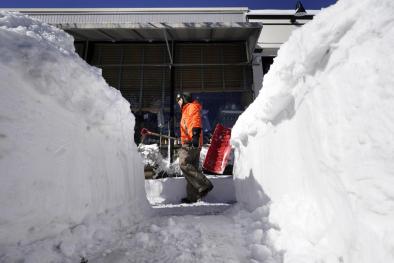Science Source
Health and Sea Level Rise: Impactson South Florida
- Provides a foundation for health-related climate change studies
- Identifies the communities in Southeast Florida (Palm Beach, Broward, Miami-Dade, and Monroe) that will be most vulnerable to sea-level rise impacts in the coming decades
- Identifies specific potential public health risks and correlate these risks to identified populations under a 2030 and 2060 sea-level rise scenario
- Informs adaptation, mitigation and infrastructure planning and provides a new method for linking socio-economic vulnerability and health risks to climate change effects
- Includes a tool kit with recommendations for local decision makers and planners
In summary, the study revealed several important facts:
- When considered according to our framework, there are large populations who currently demonstrate at least one vulnerability - social, medical, or geographic - to sea-level rise, with many of these vulnerabilities overlapping
- Sea-level rise has a direct influence on groundwater and, thus, will cause groundwater levels to rise as the sea rises, increasing the number of geographically vulnerable people
- With time, there will be an increasing number of people who are likely to be impacted by the flooding effects of sea-level rise, who are also socially and medically vulnerable
- At present, those residing in higher socioeconomic status areas have a high risk of vulnerability to sea-level rise. Over time, this land may no longer be viable
- There is a need to access more granular data to better understand the health effects of sea-level rise, as they manifest over time. Geographic vulnerability can be evaluated at the property level, and demographic data at the Census block level; much of the health data has only been available at the county or ZIP code level which limits the ability to identify more specific populations representing vulnerability to all three factors
- Sea-level rise requires a constant conversation across sectors in South Florida for the development of comprehensive mitigation and adaptation strategies. A large portion of this project was focused on establishing a rapport with diverse sectors to learn their impressions of these findings as well as to glean additional considerations. Health care practitioners are essential to this conversation
- Adaptive capacity and resiliency building require a regional collaborative effort and will not be as effective if localized
Related Content
Headline

Feb 1, 2022 | Climate Nexus Hot News
Black Communities Affected Unequally By Increasing Flood Risk
Headline

Jan 31, 2022 | Climate Nexus Hot News
Bomb Cyclone Hammers New England, Thousands Without Power
Headline

Nov 29, 2021 | The Washington Post
A changing climate is buckling concrete and flooding roads. States are moving slowly to guard the nation’s infrastructure.
Headline

Nov 22, 2021 | Sarasota Herald-Tribune
Forecaster: Sarasota to see faster sea level rise, more very hot days in coming decades


